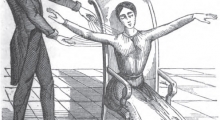
We received recently a letter from a Gestalt psychotherapist asking how he could integrate hypnotic fascination in its practice. Gestalt therapy is about getting to the whole picture, the globality and it is highly quantistic in its
Hypnotic fascination and Gestalt therapy are two powerful tools that can be used together to bring harmony and balance to the mind. Both methods focus on exploring and understanding the connections and patterns of our thoughts, emotions, and experiences.
Hypnotic fascination allows individuals to access the unconscious mind in seconds, to create a fast hypnosis with immediate catalepsy and the freeze. This can be useful in a variety of fields, such as psychology, sports, and therapy, to bring about positive change.
Gestalt therapy, on the other hand, is a holistic approach that recognizes the interconnection of the mind and body and the interconnectedness of all aspects of our lives. It helps individuals to see the connections and patterns in their experiences, leading to a deeper understanding and integration of the self.
When these two methods are used together, individuals can access the unconscious mind and understand the underlying principles of their thoughts and emotions. This can help them to process and integrate traumatic experiences, improve their performance, and solve phobias and addictions. Additionally, it allows individuals to access the deep self, which is the implicit level behind our reality and brings inner peace and harmony.
In summary, hypnotic fascination and Gestalt therapy can be used together to help individuals understand the connections and patterns of their thoughts, emotions, and experiences. This can lead to a deeper understanding and integration of the self, and ultimately bring inner peace and harmony.
Here two practical examples for Gestalt therapist curious about hypnotic fascination:
Trauma Processing: A person who has gone through a traumatic event may find it difficult to process and integrate the experience. Using hypnotic fascination, the therapist can help the individual access their unconscious mind and create a safe space for them to explore their thoughts and emotions. The therapist can then use Gestalt therapy to help the individual see the connections and patterns in their experience, leading to a deeper understanding and integration of the event. This can help the individual to come to terms with the trauma and move forward with their life.
Improving Athletic Performance: An athlete who is struggling with their performance may benefit from the combination of hypnotic fascination and Gestalt therapy. The therapist can use hypnotic fascination to help the athlete access their unconscious mind and unlock the underlying principles of their thoughts and emotions. The therapist can then use Gestalt therapy to help the athlete see the connections and patterns in their experiences, leading to a deeper understanding of their performance. This can help the athlete to identify the blocks that are preventing them from reaching their full potential and develop strategies to overcome them. This can help the athlete to improve their performance and reach their goals.








